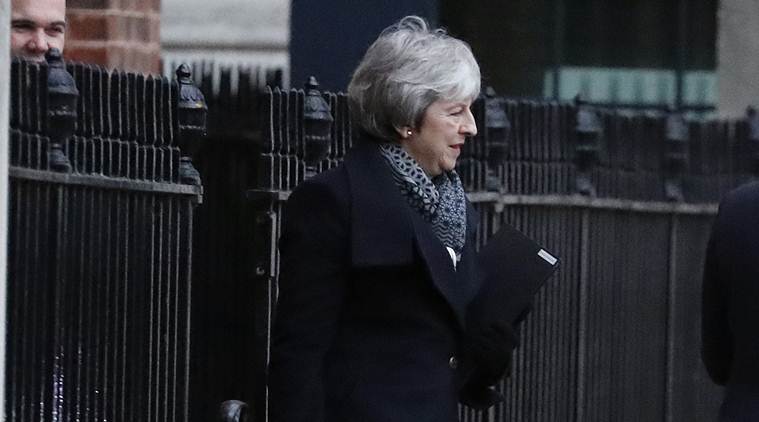
Written by Benjamin Mueller
On Tuesday, the British Parliament is to vote on a number of amendments to a motion outlining Prime Minister Theresa May’s Plan B for Britain’s withdrawal from the European Union. The casual observer will find this an opaque and arcane process, and can be forgiven for wondering why it took so long for lawmakers to start discussing different ideas.
Here is a guide to the amendment process, and why it could be a critical moment for Brexit.
Who gets to offer amendments?
At the beginning, at least, the amendment process is similar to that in the U.S. Congress. Bills are brought before the legislative body — by the government in Britain, by majority parties in the United States — and various lawmakers have the right to offer amendments.
They provide a chance for lawmakers outside May’s government — those in opposition parties, like Labour, and “backbenchers” in her own Conservative Party — to include their two cents. In this case, May published a motion that Parliament will vote on Jan. 29; the motion may or may not have been amended in ways that can have a large impact on the final shape of Brexit.
The amendments are not legally binding, for the most part, but May will be under political pressure to follow any proposals that win the backing of a majority of lawmakers.
So far, more than a dozen amendments have been proposed.
That sounds messy.
There is one important check on the process. While any lawmaker can offer an amendment, only one person in Parliament has the power to decide which of them get a vote: the speaker of the House of Commons, John Bercow.
Behind his famous braying of “Order, order!” and his insults of unnecessarily chatty lawmakers, the humdrum process of picking amendments is a big part of Bercow’s influence. To May’s chagrin, he has been a champion of Parliament’s right to intervene.
Until the vote on Tuesday, it won’t be clear which amendments Bercow will allow.
Even after he chooses, the lawmakers who wrote the amendments can pull them back at the last minute if they think they are not likely to pass. And May can simply agree to take the changes if they look certain to win a majority.
What do they say?
The most hyped amendment, offered by Yvette Cooper of the Labour Party and Conservative Nick Boles, is designed to make it more difficult for Britain to leave the bloc without a deal. If Parliament has not agreed to a deal by the end of February, the amendment says, Parliament should get a chance to vote on delaying Brexit, possibly for a few months or even until the end of the year.
That would cheer a broad coalition of lawmakers who are aghast at the likely economic fallout of a no-deal exit, along with those who want to buy time for a second public vote on whether Brexit should happen at all.
An amendment offered by a Conservative lawmaker, Graham Brady, would give Parliament’s backing to a harder-line Brexit. It is designed to force May to scrap the “backstop” plan that at least temporarily binds Britain and, to a greater extent, Northern Ireland to European trading rules. (That plan is meant to avoid customs checks on the historically contentious border between Ireland, a member state of the European Union, and Northern Ireland, which is part of the United Kingdom.)
What those warring amendments have in common is that they give clear signals about what Parliament does not want — a no-deal exit, in one case, or temporary ties to the European Union, in the other — without charting a course for what May should negotiate instead.
And there are many more. An amendment offered by a Conservative lawmaker, Dominic Grieve, would set aside six days before March 29, the Brexit deadline, for Parliament to debate a wide array of Brexit plans. Labour’s official amendment would let Parliament weigh in on the party’s preferred Brexit deal, which includes stronger and more lasting ties to the European Union’s single market, and says lawmakers should get to vote on whether to hold a second public vote on Brexit.
What does this mean for Brexit?
May’s Conservative Party is split on the question of how thoroughly Britain should cut ties with the European Union. Labour is divided about whether Brexit should even happen.
That has left Parliament in paralysis and May unable to force through her Plan B. That logjam has put lawmakers in the rare position of being able to use amendments to rally unconventional, cross-party coalitions behind their own ideas.
So it is possible, though by no means likely, that some new approach will emerge from all the competing proposals that enough factions can agree upon to get a Brexit deal over the finish line in Parliament. But at least one big question remains: If Parliament decides to send May back to Brussels to tear up a deal that was the product of 18 months of negotiations and try to extract major concessions from the European Union, how will European leaders respond?
So far, they have rejected any suggestion for changing the backstop unless May eases her “red lines” on Brexit, particularly her refusal to have Britain remain in a customs union with the bloc. Jean-Claude Juncker, the president of the European Commission, reiterated that stance in a recent phone call with the prime minister.
At the very least, however, by Tuesday night Parliament should have a better idea of the support for some of the plans, whether hard, soft or, in the case of May’s Plan B, somewhere in between.